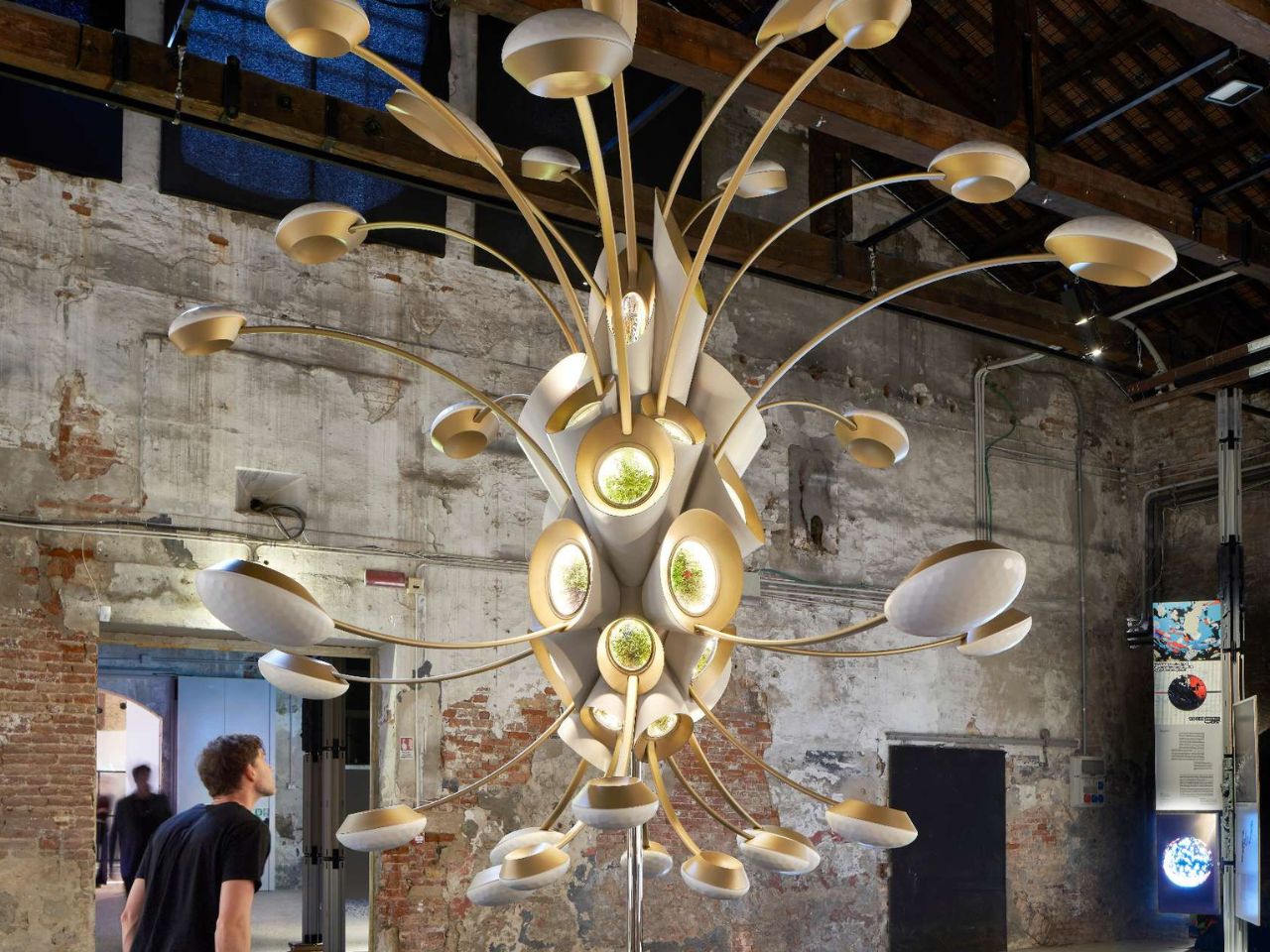At this year’s Venice Biennale, an unexpected vision of life in space captures imagination. Far from the cold, metallic interiors we usually associate with orbital habitats, Space Garden introduces a radically different idea: a lush, living greenhouse floating above Earth. Designed by renowned British firm Heatherwick Studio in collaboration with the space architecture nonprofit Aurelia Institute, this concept isn’t just about surviving in space; it’s about thriving.
Space Garden is a futuristic prototype for a space-based greenhouse that rethinks how humans might live beyond Earth. Rather than sterile walls and minimalist design, this habitat overflows with greenery. The structure consists of 30 pod-like modules, each housing a unique plant species, arranged around a central space dominated by a single, symbolic tree: a pomegranate. Revered across cultures as a symbol of life, fertility, and renewal, the pomegranate tree brings emotional resonance and historical depth to this bold design.
Designer: Heatherwick Studio and Aurelia Institute
Constructed as a 4-by-4-meter model, the installation is a feat of technical precision. It was built by Millimetre, a UK-based fabrication studio known for pushing the limits of architecture and design. Each pod is carefully engineered to open and close, regulating light exposure and shielding the plants from space debris. The outer skin of the structure is lined with photovoltaic cells, harvesting solar energy to sustain the ecosystem within.
But what makes Space Garden so compelling isn’t just its technical prowess; it’s the philosophical shift it represents. According to designer Thomas Heatherwick, the goal is to redefine what space habitats can be. “Space habitats have always been about survival,” Heatherwick explains. “Space Garden started as an experiment in humanizing space, by growing the kinds of plants that help with mental health in small environments.”
In a way, Space Garden is a critique of the utilitarian mindset that’s dominated space exploration since the mid-20th century. It asks: If humans are to spend extended periods in orbit, or even colonize other planets, shouldn’t we bring along the comforts and aesthetics of Earth? Shouldn’t we nurture our emotional and psychological needs, not just our physical ones?
And while the concept is deeply rooted in human-centered design, it also explores how space environments can benefit plant life and vice versa. In microgravity, certain biological processes behave differently, sometimes even more efficiently. The team hopes this could lead to breakthroughs not only in space-based agriculture but also in advanced manufacturing techniques using biological systems, innovations that could eventually have powerful applications back on Earth.
Beyond its scientific ambitions, Space Garden is also a form of speculative design, projecting a future where the natural and artificial co-exist harmoniously. It invites us to imagine a version of space life where architecture doesn’t abandon nature but embraces it, where mental health, beauty, and biodiversity are not afterthoughts but foundations.
The post Heatherwick’s Space Garden Reimagines Life in Orbit with Lush Greenery and Futuristic Design first appeared on Yanko Design.

